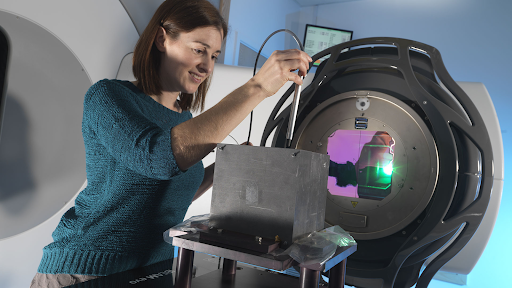A brief history of Thermoluminescence
Thermoluminescence was first discovered by the British physicist William S. S. McKeever in 1953. McKeever observed that certain minerals, when heated, emitted light due to the release of trapped electrons that had accumulated from prior exposure to radiation. His pioneering work laid the foundation for understanding the underlying mechanisms of thermoluminescence, which involves the excitation of electrons within the crystal lattice of materials. This discovery subsequently led to the development of thermoluminescence dating and its applications in archaeology, geology, and radiation dosimetry.What is meant by Thermoluminescence?
- Archaeological Dating: Thermoluminescence dating is used to determine the age of pottery and other ceramics by measuring the accumulated radiation exposure since their last heating.
- Radiation Dosimetry: Thermoluminescent dosimeters (TLDs) are employed in medical and occupational settings to measure exposure to ionizing radiation, providing important safety monitoring.
- Geological Studies: Thermoluminescence is used to date sediments and quartz grains in geological contexts, helping to understand sediment deposition and environmental changes.
- Museum Conservation: Some museums use thermoluminescence to assess the age of artifacts and to ensure they are preserved accurately.
- Environmental Monitoring: Thermoluminescent materials can detect historical radiation levels in soils, aiding in environmental assessments following nuclear incidents.
What is significance of Thermoluminescence?
The significance of thermoluminescence lies in its wide-ranging applications across various fields, particularly in archaeology, geology, and radiation safety. It serves as a powerful dating method, allowing researchers to determine the age of artifacts, such as pottery and sediments, by measuring the accumulated radiation exposure since their last heating. Additionally, thermoluminescent dosimeters provide critical data for monitoring radiation exposure in medical and industrial settings, ensuring safety for workers and patients alike. This technique also plays a vital role in environmental studies, helping assess historical radiation levels and contributing to our understanding of geological processes. Overall, thermoluminescence is an essential tool for both scientific research and practical applications.
Application of Thermoluminescence
Archaeological Dating
One of the primary applications of thermoluminescence is in archaeological dating, particularly for ceramic artifacts. This technique allows researchers to determine the last time an object was heated, providing a chronological framework for excavated materials. By measuring the accumulated radiation dose in the mineral grains of the pottery, archaeologists can ascertain its age, often dating artifacts that are thousands of years old. This method has proven invaluable for understanding ancient cultures and their development, helping to fill gaps in the historical record.
Radiation Dosimetry
Thermoluminescence is also widely used in radiation dosimetry, where thermoluminescent dosimeters (TLDs) are utilized to monitor radiation exposure in various settings, such as hospitals, laboratories, and nuclear facilities. These dosimeters are sensitive to ionizing radiation and can accurately measure doses received by individuals over time. TLDs are crucial for ensuring the safety of medical personnel and patients undergoing radiological procedures, as well as for workers in environments where radiation exposure is a concern. This application plays a critical role in maintaining health and safety standards in many industries.
Environmental and Geological Studies
In environmental and geological research, thermoluminescence helps in dating sediments and understanding geological processes. By analyzing quartz and feldspar grains, scientists can track sediment deposition and the timing of geological events, such as landslides or volcanic activity. This application is particularly important for reconstructing past environments and assessing the impacts of climate change over millennia. Additionally, thermoluminescence can provide insights into contamination levels in soils and sediments, aiding in environmental monitoring and remediation efforts. Overall, its versatility makes thermoluminescence a vital tool in both research and practical applications.
How can Thermoluminescence help archaeologists?
Thermoluminescence is a valuable tool for archaeologists as it enables them to accurately date ceramic artifacts and sediments, providing essential chronological context for archaeological sites. By measuring the accumulated radiation dose in mineral grains, archaeologists can determine the last time an object was heated, helping to establish when it was created or used. This dating technique is particularly useful for artifacts that lack organic materials suitable for radiocarbon dating, allowing researchers to fill in chronological gaps and better understand the cultural and historical significance of the findings. Consequently, thermoluminescence contributes significantly to reconstructing past human behaviors and interactions within ancient societies.





















0 Comments